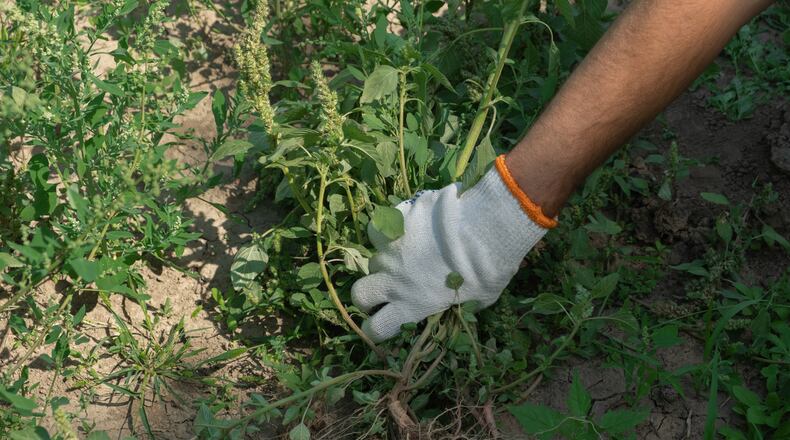It seems like this spring has gone by quickly, and it has because of the higher temperatures. Spring blooming plants have come on quicker. Saying that, sometimes it seems like plants are blooming earlier than last year, and when I check on the growing degree days (GDD), it’s almost the same as last year.
So, to be sure that plants are ahead of schedule this year, I checked the GDD calendar at weather.cfaes.osu.edu/gdd. The GDD for 5/22/2024 was 780, for 5/22/2023 it was 572 and for 5/22/2022 it was 603.
So, based on scientific information, we are ahead of bloom schedule compared to the last two years. However, if you recall an earlier column in February, it “seemed” like we were ahead, but we were even with last season.
I am not complaining because I like warm weather. It is a bit disappointing for my spring flowers to be short-lived, but I will get over it.
One thing for sure, the weeds are loving this weather. Winter annuals (chickweed, hairy bittercress, cressleaf groundsel, etc.) have almost all gone to seed. Use a pre-emergent herbicide now to prevent them from germinating in the fall, during cooler weather.
The pre-emergent herbicide may also control the summer annuals such as purslane, foxtail, crabgrass, goosegrass, etc.) unless they have already germinated. Hoe these out of the garden first and then you can apply the pre-emergent herbicide.
When it comes to perennial weeds in your landscape beds, well, let’s just say these are challenging. Perennial weeds typically have a taproot (dandelion, thistle, etc.) or grow easily with underground stems (runners). These have the capacity to spread easily and quickly.
Dandelions and those with taproots take time and multiple tactics to remove. If they are in the flower beds, using a herbicide such as glyphosate can be problematic. This active ingredient kills all green tissue that it contacts.
I have heard people use a paintbrush or sponge to brush the herbicide on the leaves, preventing spray on the good plants. Always read the label for application information.
Pulling those weeds with taproots helps as you remove the plant before it goes to seed, adding more plants to the beds. However, if you don’t get the entire taproot, it will grow again, and again and again, as long as there is a food source (taproot).
Pulling combined with herbicides can decrease the plants capacity to survive. Pulling over and over will eventually starve it. A herbicide alone may take more than one application to completely kill it.
My best recommendation is this: don’t let the weeds go to seed. Get them out before they have a chance to spread their progeny throughout your beds.
Pamela Corle-Bennett is the state master gardener volunteer coordinator and horticulture educator for Ohio State University Extension. Contact her by email at bennett.27@osu.edu.
About the Author
